As an Autopian car enthusiast, what parts of the globe do you think the qualities of the ideal sport/luxury sedan would hail from? For me, I’d want unique Italian styling combined with German engineering and assembly. Honestly, I might not mind a time-tested American powerplant under the hood so I can sleep at night not worrying about when that $20,000 replacement cost is going to hit me.
One thing I can tell you: I absolutely would not want a basic domestic sedan that’s been dolled up to appear “premium” enough to justify a higher cost. Unfortunately, that’s exactly what the Big Three tended to offer us about four decades ago, with the expected results. What’s a shame was that at least in Ford’s case, they had a concept which fit the exact description of my dream four-door, but did absolutely nothing with it. Can we see what would happen if they didn’t let the opportunity go?
Where Is That Large Automobile
Today I was looking at a 2005-year car on the road, and it occurred to me that automotive design and styling trends have not changed anywhere nearly as quickly as they did in the last century. For example, you’d look ridiculous if you drove a 1959 car with giant tailfins even ten years later in 1969. At the same time, by 1979, those massive late sixties boats were out of style and out of touch thanks to the two energy crises. Younger luxury car buyers around 1980 were gravitating towards smaller European sedans, and they had no interest in these massive Lincoln Continentals and Cadillacs.
This was a problem; it was an easy enough thing for an American car maker to snip fins off of fenders, but to create an all-new product a thousand pounds lighter with a sense of road manners and- gasp- even a manual transmission? That’s a tall order, and they understandably didn’t have any idea how to adapt.

Cadillac’s first response was in 1975 with the Seville. Despite being based on the Chevy Nova, GM altered the chassis enough to make it passable as a “luxury compact”. The styling was rather crisp and well proportioned, even though the vinyl roof covered up a seam where the Nova’s roof stamping met the new “formal” backlight. The public bought into this new “small” Cadillac, even though it was priced as the most expensive car they offered other than the factory limousine.

Still, this was dangerous business since General Motors believed that they found the profitable formula to compete with real European road cars such as Mercedes and BMW. They’d learn quickly that wasn’t the case.
Actually, Ford learned the lesson first. With the Lincoln brand, they tried to repeat the Nova-based Seville experiment with modifications to their Maverick chassis Granada. The resulting Lincoln Versailles, with its tire hump and landau roof, bordered on the comical and flopped in the market; it was clear that the luxury branches of the Big Three were in trouble.

Cadillac’s later solutions of painting chrome black and tightening up suspensions a bit on “touring sedan” editions of their traditional barges or putting leather seats into an otherwise unchanged Chevy subcompact (cough..Cimarron..cough) also failed to move the needle.

To their credit, there’s no way they could have pulled a rabbit out of a hat with a quick solution to answer these rapidly changing trends. They’d almost have to bring over actual European luxury sedans to sell under their own brand name. The good news? Both Ford and GM already had such sedans across the pond, and they were pretty damn good. The bad news? They did nothing with them in North America.
Cantata Not Catera: The Bitter Pill
What if the biggest of the Big Three really did try to make something of the cars under their overseas umbrella? Well, for GM’s Cadillac, you might remember that I already considered this in a post a while back:
I looked at the Cimarron conundrum that GM had of trying to find a car that would meet the Europeans head-on. What could they do? You know, how could they offer a German-built rear-drive high-end sedan with a straight six and four-wheel independent suspension, four-wheel disc brakes and an available five-speed manual? Something like, I don’t know, an Opel Senator? You mean a car that GM was actually making already? Yeah, apparently they didn’t see the potential of this rather underrated chassis, but Austrian coachbuilder Erich Bitter certainly did when he rebodied the Senator and sold it as the Bitter SC coupe.

In my alternate reality, GM would have reached a deal with Erich in 1982 to make a federalized-and-Cadillac-branded four-door Opel Senator sedan with Bitter-designed nose, tail, and door skins (Two door coupes would remain branded as Bitters with a larger engine and sold through select Cadillac or Oldsmobile dealers). The end result I dubbed the “Cadillac Cantata:”

You can see that it looked rather fetching compared to other $20,000 to $30,000 German rivals of the time such as a scaled-up Passat (Audi 5000), a Bimmer with a low revving “eta” engine (528e) and a car that sounded like the engine was eating itself when idling (w123 300D):

Inside the trimmed-up Opel interior would be more lavish looking than that rather antiseptic cabins of the German rivals which in some cases gave you vinyl seats as standard, and the Bitter-style tail of the car would be spiced up with wide, tri-colored taillamps (yes, they’re Cimarron units turned upside down).

I firmly believe that this Russelsheim-built Cadillac would have been a success in the market; maybe not the gangbusters windfall of the 1975 Seville but absolutely better than the Cimarron. Even if it didn’t sell outrageously well, GM certainly wouldn’t have lost the corporate credibility they did with the overpriced Cavalier that really damaged Cadillac’s reputation to this day.
That’s fine for The General, but what about Ford? They also had a German-built executive sedan that was just as good as the Opel Senator, and a concept car that showed how that production car could have been turned into something rather striking.
Fake Euro Versus Real Euro- A Tale Of Two Granadas
If I say “Ford Granada”, many Americans will groan as they imagine the so-called “Maverick Mercedes”. This Lee Iacocca gem put a body onto Ford’s bread-and-butter compact Falcon-replacement sedan that was supposed to look like a W114 Benz, though it only really had that similarity to people who knew nothing about cars. Sadly, there were a lot of those individuals in America, and they ate up the color-keyed hubcaps, upright grille, and pointy-ended headrests JUST LIKE A MERCEDES!

However, over in Europe, the Granada was a totally different car: a well-designed and equipped machine to actually rival mid-sized cars from Peugeot, Audi, BMW, and Mercedes. Introduced for 1972, the Granada “executive” sedan was rear-wheel-drive with an independent suspension even in back, though disc brakes were only offered in front. Styling was contemporary and clean, though still featuring some transatlantic detailing.
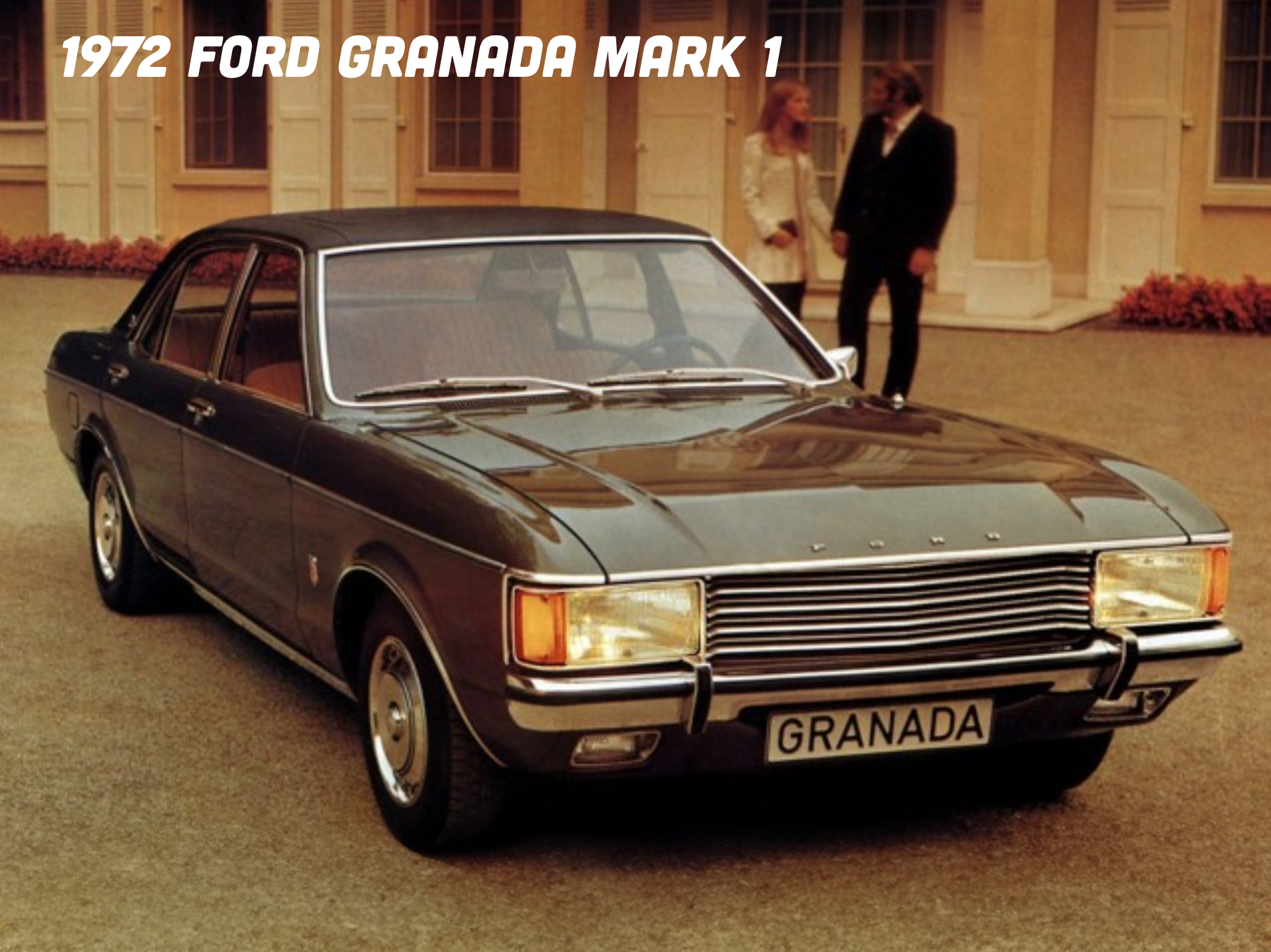
Oddly enough, Ford North America had considered bringing this Granada over the ocean to sell as the Lincoln Mark I, complete with chrome grille and stand-up hood ornament. Thankfully, I don’t see a tire hump in back; it doesn’t look as bad as I thought it would, and it’s proof that Ford was considering the fight-German-with-German approach.

Ford ultimately rejected the idea. The cost of importing the Granada was deemed too high, and the feeling was that most American buyers wouldn’t care about the more sophisticated European technical specifications; they could make something far more profitable out of a dolled-up Maverick (that Versailles). We know how that went.
The second generation car was launched as a 1978 model; designed by Uwe Bahnsen, it traded the American “Coke bottle” styling of early seventies Fords for a more angular “folded paper” look that was also adopted by Bahnsen’s friend and coworker Jack Telnack on the Fox Mustang (though both would lead the rounded aero revolution years later with cars like the Ford Sierra and Taurus).

Various powerplants were available, though being marketed as a “high level” sedan typically bought as company cars by mid-to-upper-level managers meant that the six-cylinder options were what the Granada was best known for. The Cologne-built 2.8-liter V6 with available fuel injection was the top-of-the-line engine, shared with the legendary Mark III Ford Capri, and it was the ideal powerplant to rival the inline six in their direct competitor, GM’s Opel Senator. Producing 160 horsepower and available with a five-speed manual, the Cologne motor was noted for being far more tractable than the “Essex” 3.0-liter “boat anchor” V6 from years before. The Granada might not have been the equal of an E28 5-series sedan, but it was far closer than you might think, while offering some amenities not readily available in the BMW.

Nice as the Granada was, did it really have the chutzpah to grab the attention of younger, affluent American buyers on their way to purchase something with a Roundel or Three Pointed Star on the hood? Maybe not in stock form, but a Granada-based concept car from Italy might have.
Aren’t Ghias Rear Engined?
When you hear the name “Ghia”, your first thought unfortunately, might be the badge you’ve seen stuck onto the landau roofs of higher-level models of malaise-era Ford junk like Mustang IIs and that American Granada. The truth is that Ghia was a real Italian styling house with a storied history (such as VW’s Karmann-built Ghia-designed sportster), and they were purchased by Ford to be used as an outside think tank. Was there tension between them and the in-house Dearborn designers? Sure, but together they created some exciting concepts during the seventies and eighties, most notably the Probe series of aerodynamic studies that ultimately bore the fruit of the Ford Sierra (XR4Ti to you Americans).



Another Ghia concept that is not nearly as well-known from this era was a low-drag sedan study based on that Euro market Ford Granada. Dimensionally pushed a few inches larger in each direction from the stock Granada, the wedge-shaped Ford Altair featured a full-width clear nose covering six lights and an additional dark stripe encircling the whole car.
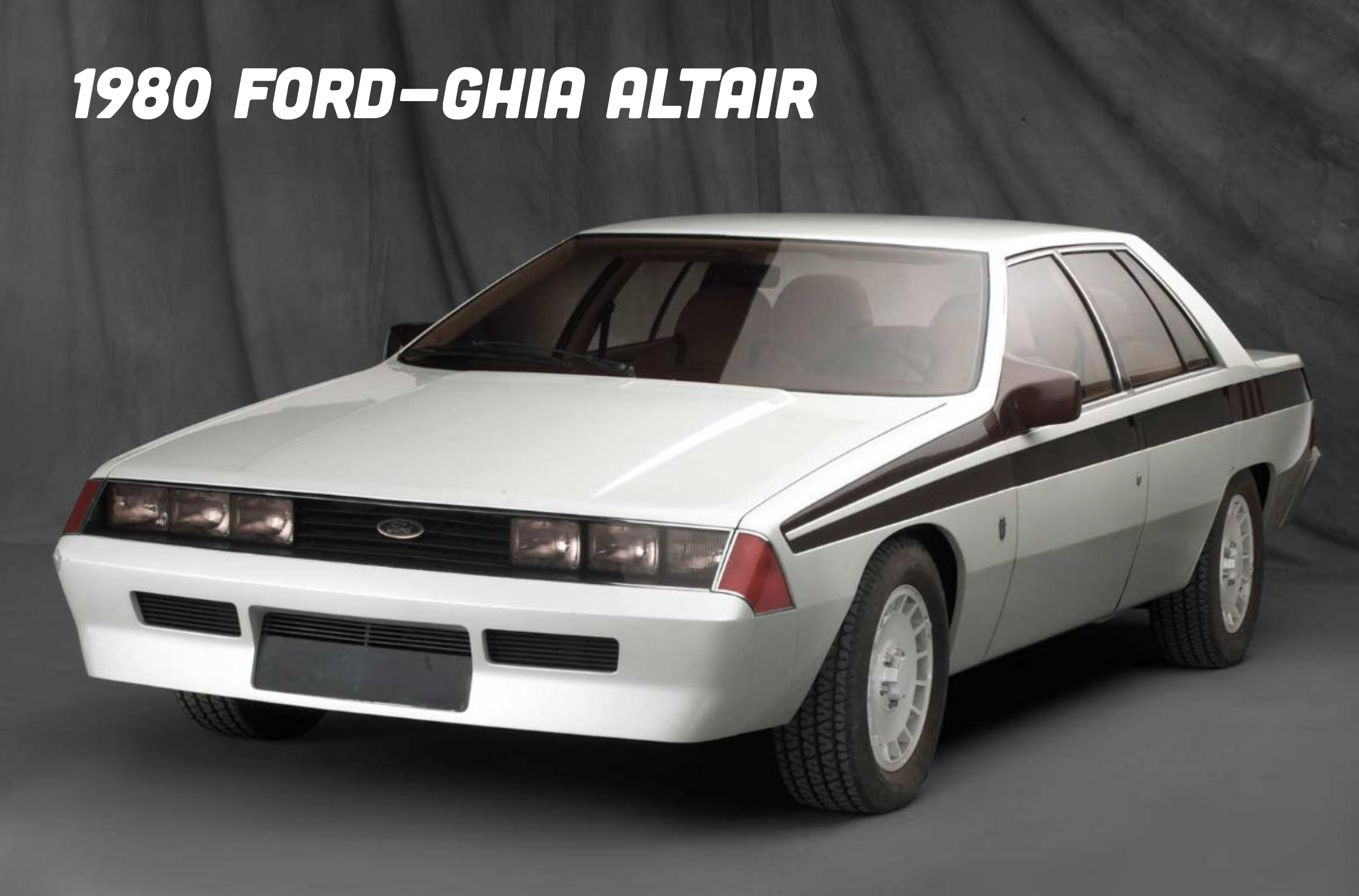
What this stripe hid was clear smoked acrylic thin secondary windows just below the beltline to give the interior a more “airy” look. How the main glass sections still rolled down is beyond me, but somehow the Turin builders made it happen.
Reportedly, the drag coefficient of the Altair was around .35, which was a significant drop from the standard boxy Granada’s .43.
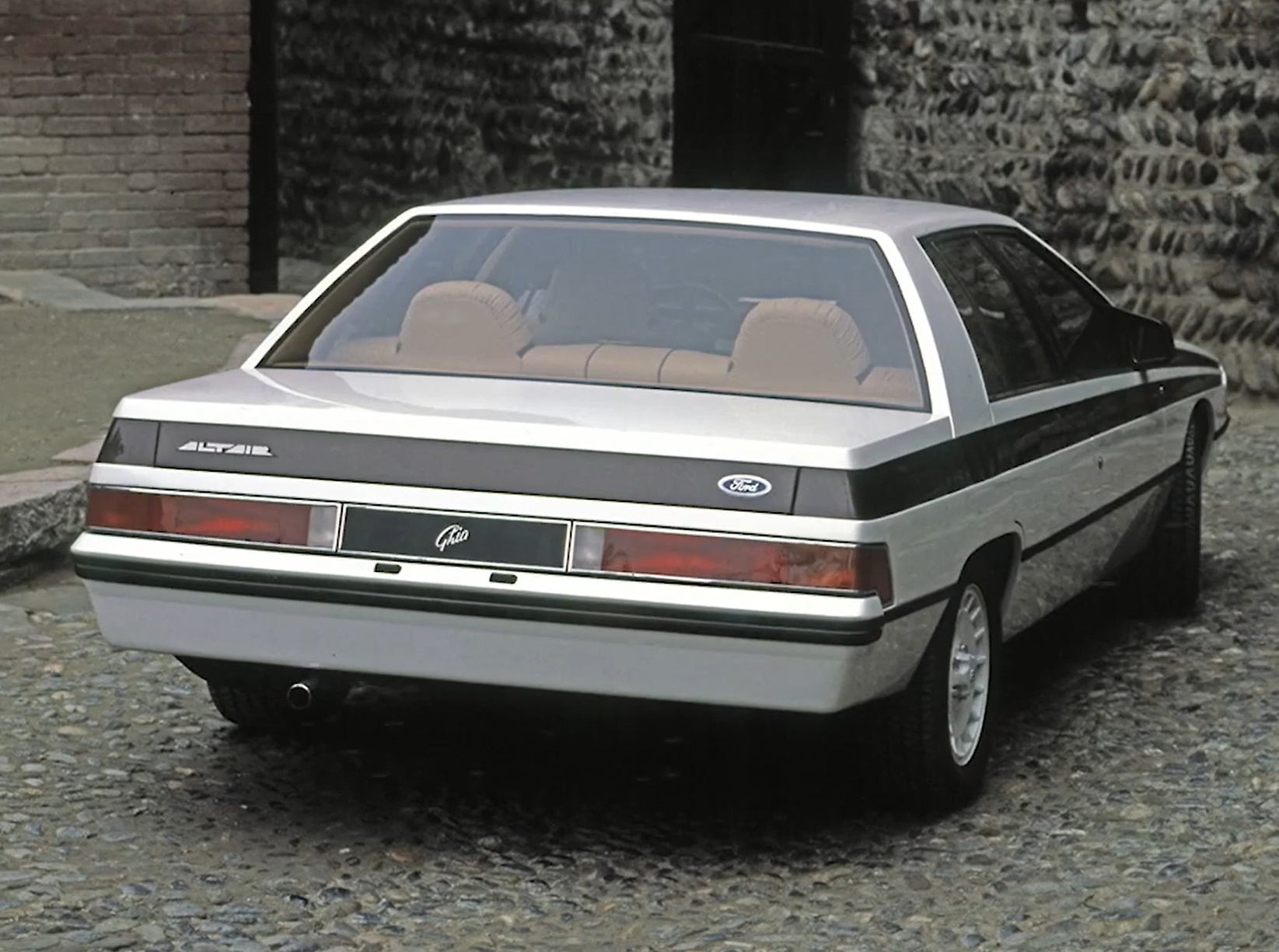
On the inside, whoa! Are you down with brown? You sure as hell get it here with seats that would be perfect in a disco-era sunken living room. Aw…freak out!
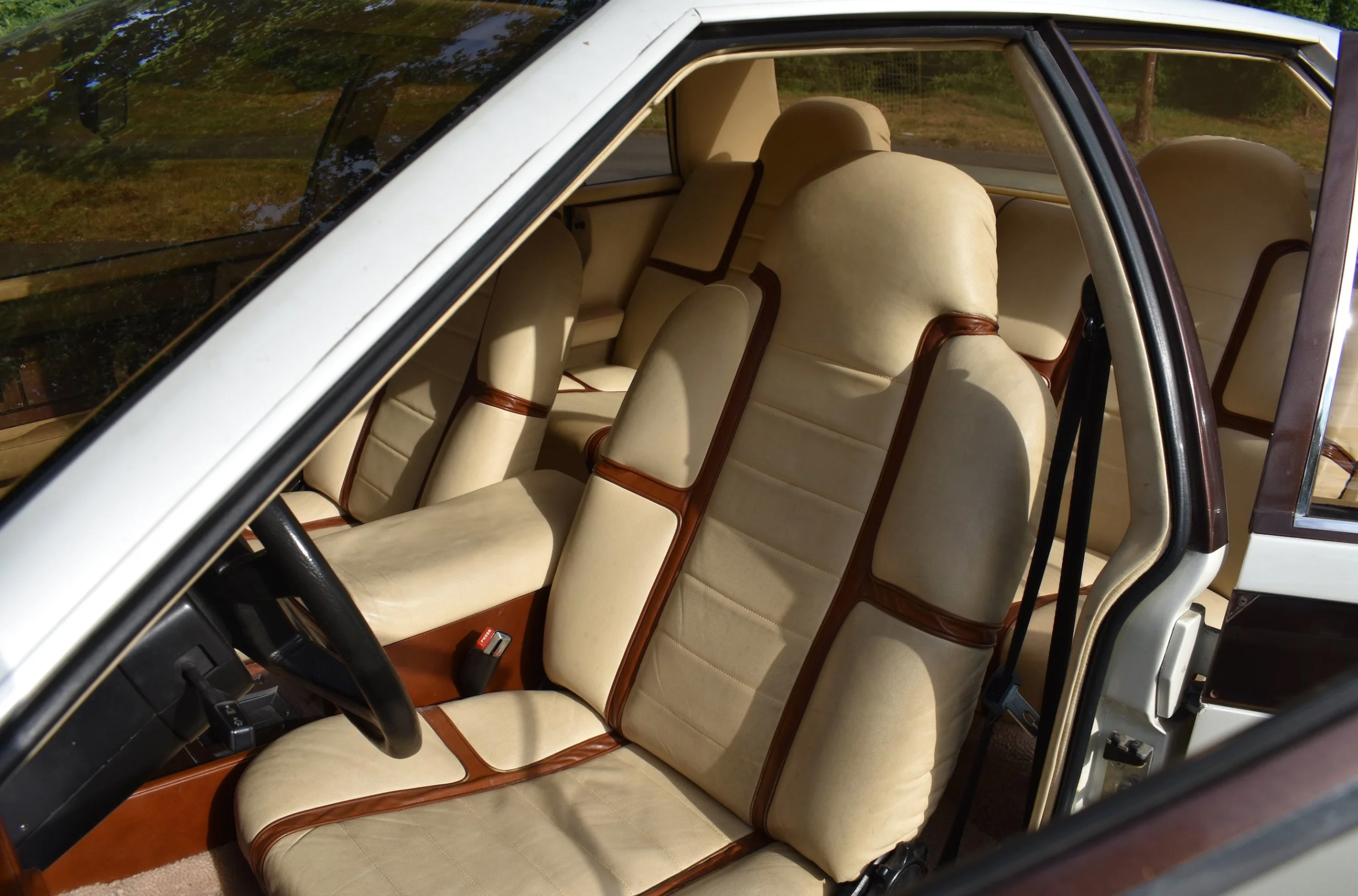
A commenter under one of the photos of this dashboard described it as “resembling the back of my teacher’s desk circa 1963”. Yeah, that’s some scary slabby-looking stuff there, with the original Granada switches and gauges plopped into place.

Overall, there’s a lot of very period detailing inside and out that I could do without. Still, if we look at the basic shape, I think it could make an ideal American-market luxury sport sedan to really attract actual European car buyers. Certainly, it would be far, far better than laughable attempts such as the Cimarron or Seville “Touring Sedan.” If our alternative universe Cadillac Cantata existed, Ford could give it a run for its money with this. Let’s see what we can do.
Altair-Net Luxury Sedan
What I like most about the Ghia Altair is that the “formal” near-vertical rear window was just what luxury buyers wanted at the time, but it doesn’t look forced or out of place. We’d certainly keep the whole profile of the Ghia concept to make the Lincoln version.
The details are what I’d change. Up front, the covered headlamps wouldn’t have passed US regulations in 1982, so they’d sadly need to be replaced with recessed Fox Mustang-style quad rectangular units. The smoked acrylic mini-windows would naturally have to go; the whole dark “side stripe” would become a body-colored recessed scallop in the steel to break up the flanks a bit.

I started with an angled-back chrome grille, but changed my mind. Instead, I kept the Ghia concept’s canted smoked panel between the headlights and had a printed-on grille graphic. Actually, the panel is printed in black; the white areas would be translucent, so at night the whole “grille” would glow thanks to some good old 1156 bulbs behind them.
I’m not sure where the license plate was supposed to go on the back of the Ghia car, so I added a pocket in the bumper. The dark stripe is gone here as well; the scallops from the sides connect with a similar recession on the trunk lid. You might notice that I raised the trunk lid a bit to allow for a matching dark stripe just above the beltline to echo the one on the front fenders below the hood.
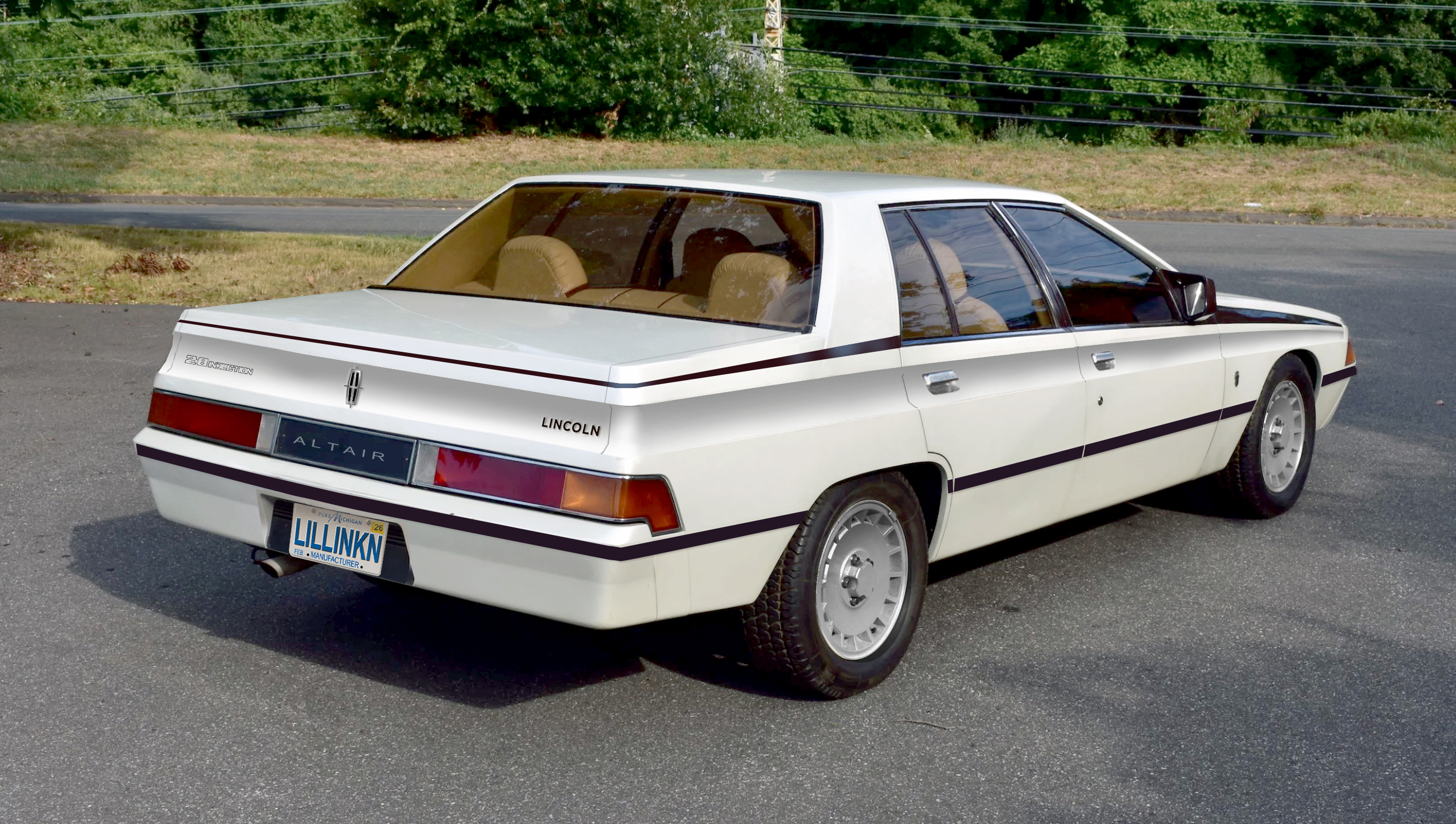
Mechanically, the Granada chassis with independent suspension all around would remain, and even the drum brakes might be fine for the standard model powered by that 2.8-liter Cologne six and a five-speed manual or an automatic. Sadly, the 160 or so horsepower that this motor pumped out in an emission-control-free Capri would likely drop to 140 or so; still not horrible for a horrible era.

This seems like a pretty nice car, but what if you want more? The M-series BMW sedans would be coming soon, so why not make an American-powered challenger? The result would be the Altair HRL, which stands for Hot Rod Lincoln from the famous old Commander Cody And His Lost Planet Airman cover of the 1955 rockabilly song.
With electrically-operated covers over the headlamps, lower ground effects, and a small “loop” trunklid spoiler, the HRL would look like it means business. Mustang-derived bits would transform the mild-mannered Altair into something more, starting with the GT’s five-liter V8 boasting a disappointing-but-good-for-the-time 175 horsepower. At least you could get a stick with four speeds at first, later adding a fifth gear. SVO wheels and rear disc brakes would mount to a tightened suspension with Bilstein shocks, and Recaro-style ‘Stang seats with the air-bladder lumbar supports replace the statelier standard Granada chairs up front.
The European Car Ripped Off Mercedes Headrests Too
On the inside, if you really want the Ghia Altair’s interior that looks like it was done by a pimp’s tailor, you’re out of luck. To keep things tasteful and save tooling money, I decided to start with the reasonable-looking cabin of the Euro Granada for the Altair (again, the HLR edition would have SVO seats and no wood trim).

The dashboard from the Granada is also a rather workable unit; it’s not exciting, but neither were BMW or Mercedes instrument panels of the time. We can use that for the Altair.
For the US Altair model, more leather would replace the downmarket-looking cloth, and the gaping junk-collecting bin in front of the passenger would be covered with a leather-wrapped lid.
An American Lincoln HVAC control unit, an optional trip computer, and a digital stereo replace the more austere German components, as well as an analog clock. The fake timber would be switched out for the real deal.
The magazine advertisement below shows how special this Altair would have seemed to people flipping through The New Yorker or Architectural Digest circa 1982. Where else could you have gotten all of this?
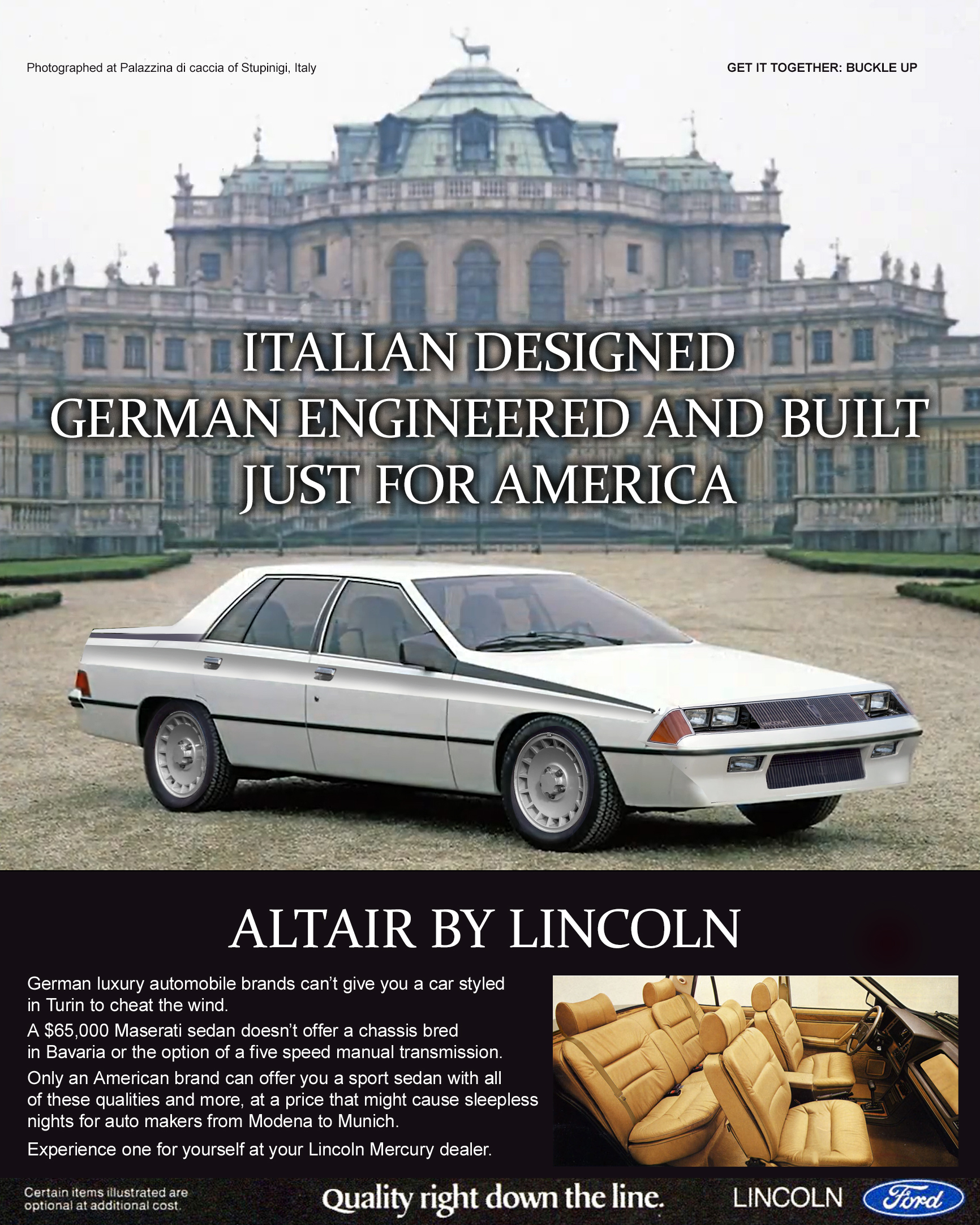
You Know That Eighties Subaru Was Weird Enough To Build It
Obviously, Ford did nothing with the Ghia Altair concept after the show circuit; it went into deep storage and is now for sale as a running car at a dealer in Connecticut. We also know that Dearborn didn’t try the whole imported-German-Ford idea until later in the eighties with the Merkur Scorpio. With rather lackluster performance combined with the fact that four-door large hatchbacks were Kryptonite for American buyers, it was an instant failure; even worse than when GM waited until the late nineties to finally bring in a German Opel as a Cadillac (Catera).

Who knows if the dramatic wedge of the Altair might have alienated customers as well. However, especially from the back, it’s obvious that some other companies were influenced by the design. Notice a bit of Altair in a particular ultra-cool Subaru coupe from the late eighties? I actually notice a lot of it.

Yeah, that’s it. I knew there was a reason I was drawn to this thing.
Top Photo: Dragone Classic Motor Cars





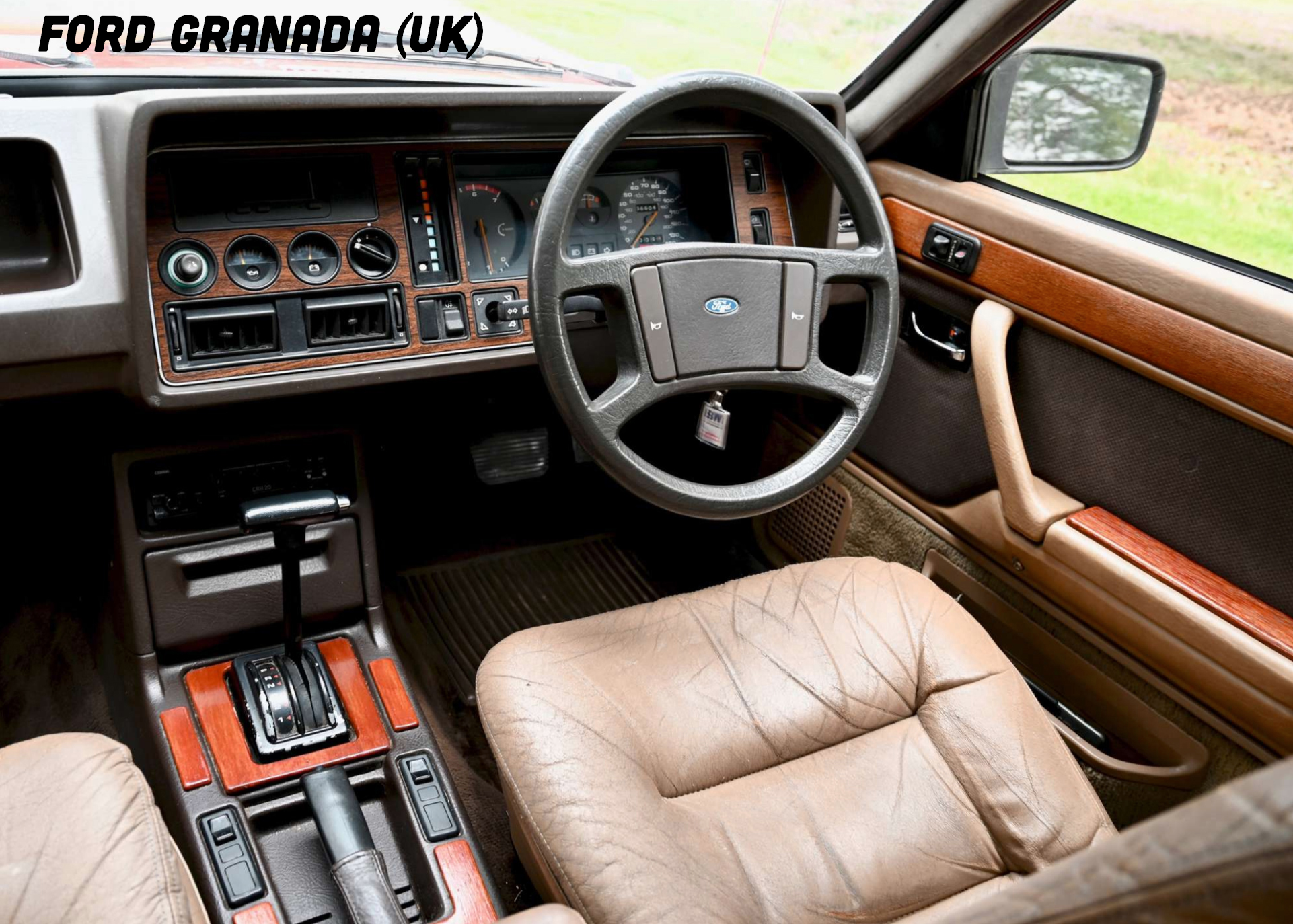





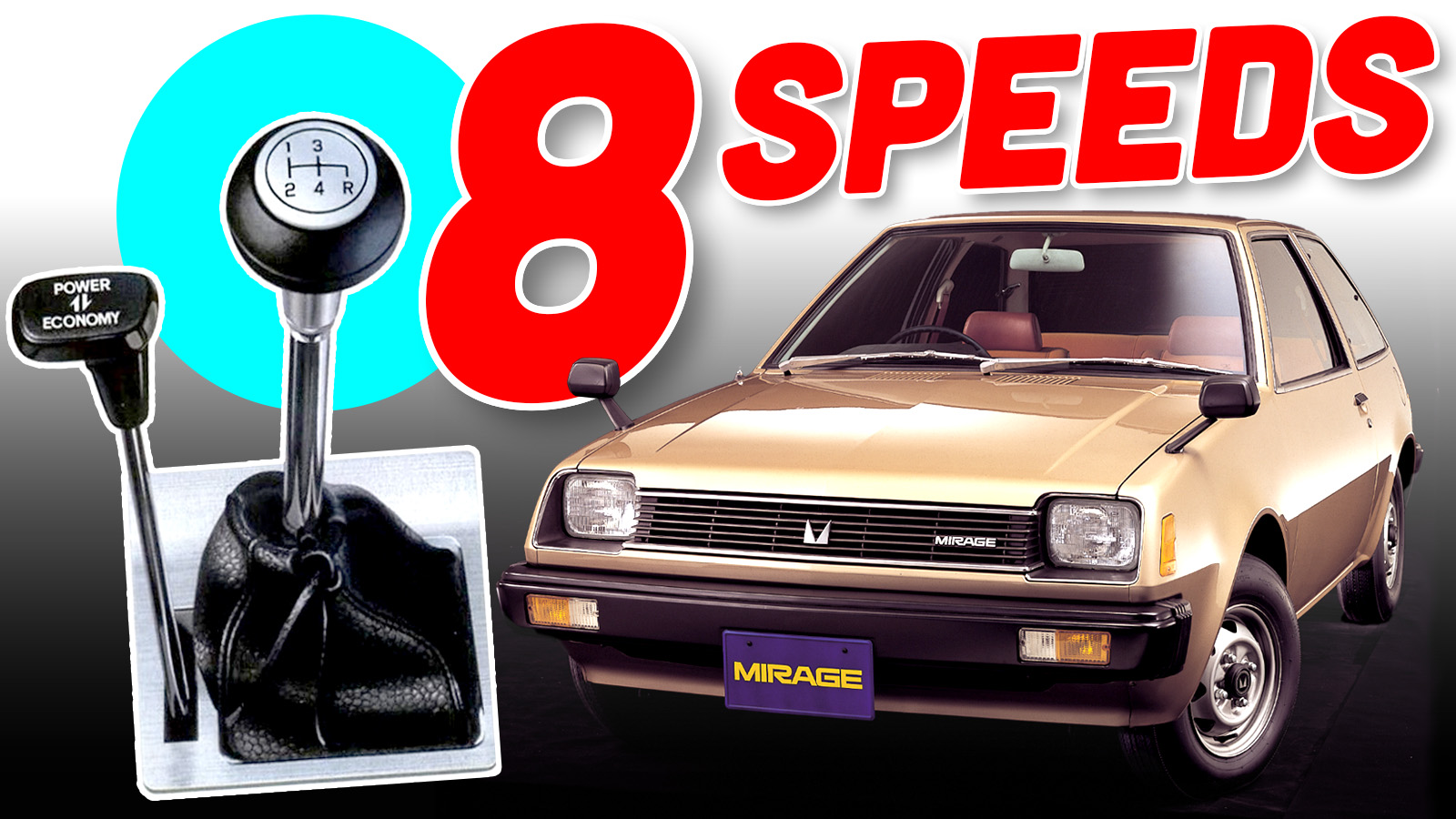


Shame about Ghia, Bertone and other design houses getting pushed into oblivion by ‘let’s bring it inside and make it as cheap as possible’ corporate design.
** Often forgotten fact** The Rover SD1 Camaro Subaru XT was the 1st production car with 20” F150 hubcap rims
I tried to fit as many of my favorite cars in there as possible, CTSVmkeLS6!
You’re forgetting the Mercury Sable light bar/Citroen SM glass nose.
Still want that Cantada. Looks like a Caddy version of a Ferrari 400 to me and I’ve always loved those.
Where is the Chrysler version? Or are we giving them a pass since the K Car saved the company even if it wasn’t as good as the Euro stuff?
You actually have a very good point there! What could it be? Iacocca sold the Chrysler Europe division to PSA, but Peugeot still provided motors for Omnis.
Hey, would a Chrysler-sold Peugeot 604 work? Couldn’t sell an worse than it did here as Pug.
Looks like something Hyundai would try to base a car off of now. It almost looks like an 80s Mitsubishi galant Camaro and some Italian and french cars meshed in to one.
I don’t hate it could have been a good town car alternative.
I want a Bitter SC so hard.
I really like the six headlight look of the Altair concept, just as I liked the look on the Pontiac 6000.
I don’t think this would have worked out sales-wise, though.
That would have been a giant flop.
Lincoln was all about the Lincoln image – and a wedgy Quattroporte III copy wasn’t it.
Lincoln already passed on a sleek folded-paper design for 1981 –
http://www.lincolnversailles.com/ca2002.htm
Lincoln made money on the Versailles – and did just fine with the bustle-back Fox Continental – which did live up/down to Lincoln buyer’s expectations.
I’ve never seen that Versailles concept before- cool find! Godawful looking, but a cool find (Dodge looks like they stole it for the Dynasty and late New Yorker actually).
“Godawful looking”
Compared to the bustle-back Seville and Imperial – I’d say this mini-Town Car would have been a more attractive choice than the bustle-back Fox Continental we wound up with.
Meanwhile in Switzerland, Peter Monteverdi was re-skinning the Plymouth Volare with an Italian design and a “more European” suspension.
The Monteverdi Sierra was such a hit that they produced almost TWO DOZEN cars.
https://en.wikipedia.org/wiki/Monteverdi_Sierra
I love it far more than the Grandas from either side of the world.
Same as it ever was, same as it ever was.
Somebody got it
And look where my hand was.
8/10 – would buy today.
And I somehow feel vindicated…XT was my first thought when I saw that rear 3/4 view.
The weird window ‘stripe’ reminded me of the deeeeep windows in the Volt concept. I think your decision to get rid of them outright was far more successful than Chevy’s attempt to mimic them with paint.
Nobody wants a big stripe around the car like on the C4 Corvette that Faceman drove on the A-Team.
B.A. Baracus and his Van would like a word….
The stripe looks great on the van, but Faceman’s car?
https://www.corvetteblogger.com/images/content/070811_10.jpg
How else were they gonna get those sweet merchandising deals? Had to have a car to sling along side the Van in playsets. Yeah Face’s Vette is worse than I remembered.
Now imagine a Ford that would have badge engineered the fourth-gen Taurus (1996-1999) to be a Lincoln. This was the era of Taurus where everything was round or elliptical with the design language. Yes, I’m aware that the Continental was built on the same platform, but the design language of the sheet metal and interior was nothing like the Taurus.
Bishop? Wanna consider that for a next Lincoln piece? Maybe more specifically, a Lincoln station wagon based upon that generation’s Taurus wagon.
I kind of think that Lincoln already did that to a large degree. The late 1990s Continental was essentially just that; the design language was pretty similar but toned down a bit.
My dad had an 80’s Opel Rekord, and the steering wheel looked like the one in the Cantata. I’ve always like the MkII Granada, especially those wheels. But no, it wouldn’t have sold well in the US in that time period.
This makes me wonder what 90s Lincolns would now look like here in the Bishopverse – would the LS have lines similar to the second-gen Ford Probe perhaps?
I like this thought process as well. Would the Continental, Mark VIII, and Town Car have adopted the curvy lines in the early 90s instead of the late 90s? Would the Navigator styling have deviated dramatically from the Expedition?
Great Article for Coulda Would Shoulda.
Good friend sold Cadillacs when the new Seville came out. Stopped by to show it off. I slid into the front passenger seat. With seat all the way back my knees were up against the dash! WTH?
Worked for Ford when the Granada came out. Doors were solid. Shut like a Mercedes. But that was about it! Gutless 6 cylinder or Not much better wheezy V8. Smog controls! Boxy design.
The joke was on me though. Was given a Pinto wagon as a demo! LMAO
Interesting that the Europeans and the Australians got the aluminum rim version of the 85-93 NA Ford truck hub cap design.
https://encrypted-tbn2.gstatic.com/shopping?q=tbn:ANd9GcSsk9wdPb9j52ntXb83o1C5zwvEUCa2thuqa-ltA5r10WwOpJaFiIrZbtoTTqDlIvyiDG2VPqMeB5bsxCQAehJhfDHQJTnbC8Z_faBFewrZ
Also that Altair front end design would have surely had gm suing Ford since it looks like a camero.
Camaro didn’t exist until 1982, and the Altair show car was first! I thought the same thing but they wouldn’t have much of a case.
Also we did get those wheels (or were they hubcaps?) on Fairmont and Fox Mustang in the early eighties.